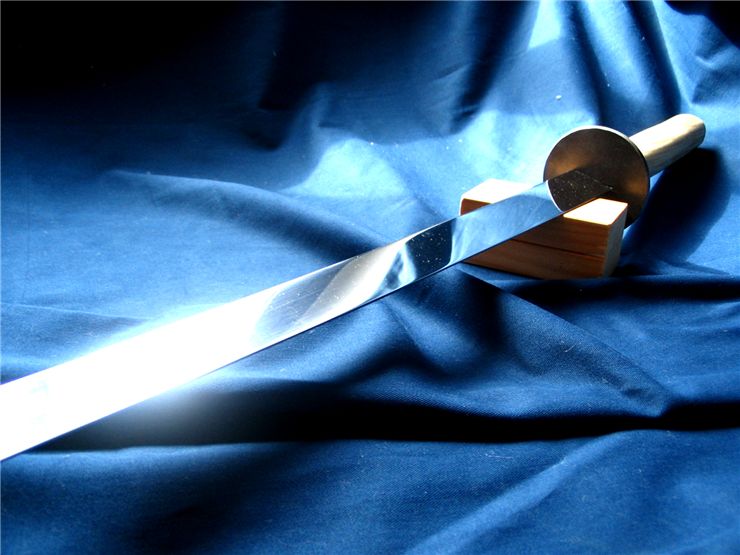History of Sabre - Origins of the Sabre
The sabre or saber is a type of a sword that has a curved blade. Its hand guard is large and made to protect the knuckles and fingers of the hand. The most sabers have a single edge and are made for slashing, but those made for heavy cavalry often had straight and even double-edged blades designed for thrusting. Sabers were worn in a scabbard that hanged from a shoulder belt known as a baldric. Some sabers, like he Patton saber adopted by the United States Army in 1913, were mounted to the cavalryman's saddle. Word sabre comes from the French sabre which is similar to the Hungarian szablya, Polish szabla, and Russian сабля. They all come from Kipchak Turkic selebe which means "to cut".
The first saber-like swords appeared in Eastern Europe the 6th century and they came by the nomads that started populating those regions. It took time, some 9 centuries, for saber to appear in European warfare. Sabers used in Hungary and Kievan Rus were spoils or copies of swords used by the Turkic and Arabic peoples: the kilij, pulwar, talwar, saif, shamshir or scimitar. For these, on the other hand, is believed that they originate from one “parent sword” the Turko-Mongol saber - Dao which dates from 1600 BC. From the Eastern Europe szabla came to Western Europe in 17th century as sabre. From the early 19th century, sabre gains widespread use and its design is inspired by the Mameluke sword, a type of Middle Eastern scimitar. Napoleon used it in great extent during his wars as a main weapon for heavy cavalry and their charges. Shorter variants were also designed and were used as sidearms by dismounted units. British Government authorized their pattern swords for use by infantry officers at the same time. As longer-range rifles appeared on the battlefields, cavalry charges fell out of favor and sabres with them at least for the military uses. Some European police forces used sabres for both mounted and dismounted police officers during the 19th and at the beginning of the 20th century. Luckily, to some extent, for civilians, sabres were later replaced with batons and night stick. Some polices like the Gendarmerie of Belgium used them until 1950s.
Today, sabers are worn as a part of uniforms by many armies performing the ornamental or ceremonial function. They are now mainly made of stainless steel, which is used for esthetic reasons but is much too brittle for direct impacts and may shatter. Ceremonial sabres are also used in the Wedding Arch or Sabre Arch, which is performed when servicemen or women are getting married.
A variant of the sabre is used today for modern fencing. It has a name of modern fencing sabre but it does not look much like a classical sabre. It primarily has a thin, 88 cm long straight blade.
Classical sabre is today used by colorguard - a detachment of soldiers assigned to the protection of regimental colors in a marching band or a drum & bugle corps.

